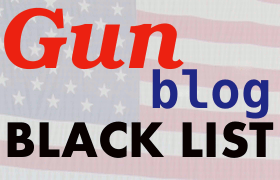I haven't seen emergency comms mentioned yet so here's my $0.02...
Charged cell phones along with car chargers, or your regular wall charger + a power inverter for the car. IF you are in an area where they work, a cell phone can let you call relatives/friends outside the danger area.
FRS/GMRS radios. FRS doesn't require a license, while GMRS does (although it's just a fee, no test required, and the license covers your immediate family). Good for short range commo, e.g., between vehicles in a bug out situation. GMRS gives you somewhat longer range, though both require line of sight. FRS/GMRS radios can be picked up cheap at any of the big box stores, from Home Depot to WalMart, to Radio Shack. If you keep an eye out you may be able to find them DIRT CHEAP. E.g., I got a pair of Midland FRS/GMRS last year from MidwayUSA for the whopping sum of $6 + S&H.
CB radio. No license required. These are still useful, although you do hear a lot of garbage, much of which is not suitable for sensitive ears. I have a portable in my truck with an external magnet-mount whip antenna. It's great for listening to truckers for real-time traffic reports and has kept me out of several jams. Also good for short-range commo. Most CBs are AM, but Single Side Band CBs will give you longer range, although you'll only be able to talk to other SSB CB users.
Ham (Amateur) radio. Here's where it gets good, IMO. I got my ticket last month. Although you need a license, the entry-level Technician class license isn't hard to get, and the info you learn while studying for the exam can be useful. You can get a good handheld (AKA "handie talkie" or "HT") for as little as $100 which will allow you to transmit and receive on the 2M FM band. These are good for commo up to several miles if you have line of sight. I can hit a 2M repeater ~10 miles away from inside my house with my Yaesu VX-5RS. Once I get my General ticket I'll be able to use the HF bands and transmit much longer distances without relying on a repeater.
Hams are currently in action down in the area affected by Katrina. Among other things, they've been able to direct rescue personnel to people stranded by floodwaters.
I don't want to encourage unlicensed use, but in an emergency FCC rules about unlicensed transmission go out the window. You're allowed to use any means of communication to secure aid to preserve human life or property against immediate threats. IMO, the most important part about getting one's ham license is getting familiar with proper operating procedures, which are critical when TSHTF.
Satellite phone is another option, although I have little knowledge of it.
A NOAA weather radio should be in your disaster kit, if one of your other radios doesn't also pick up these channels. In my case, my Midland CB already does, so I don't have a separate unit.
A portable AM/FM radio for listening to local news reports. If it picks up shortwave or the NOAA weather channels, it'll be more versatile. Some also allow you to listen to the audio portion of TV broadcasts. I'm currently shopping for a multi-band AM/FM/SW radio so if anyone has recommendations, I'm all ears.
Don't forget plenty of batteries, chargers, appropriate AC adapters, and a power inverter so you can plug them into the cigarrette lighter in your vehicle.
Wednesday, August 31, 2005
Lessons learned from the New Orleans Bug Out
There's a good thread going on over at THR about lessons learned from the bug out situation down in New Orleans. I'll repost my contribution regarding emergency communications here:
Subscribe to:
Post Comments (Atom)




2 comments:
A good DX radio is the Grundig PE100... it is inexpensive, highly portable and a good radio.
www.universalradio.com
I totally agree with you when it comes to emergency comms. During the storms the hit Florida in 2004, I installed a CB Radio in my truck and soon found it to be invaluable. Just listen, and you will hear alot of useful info, especially the availability of diesel fuel. I now have a CB and an ICOM 706MKIIG installed in the vehicle full time.
Post a Comment